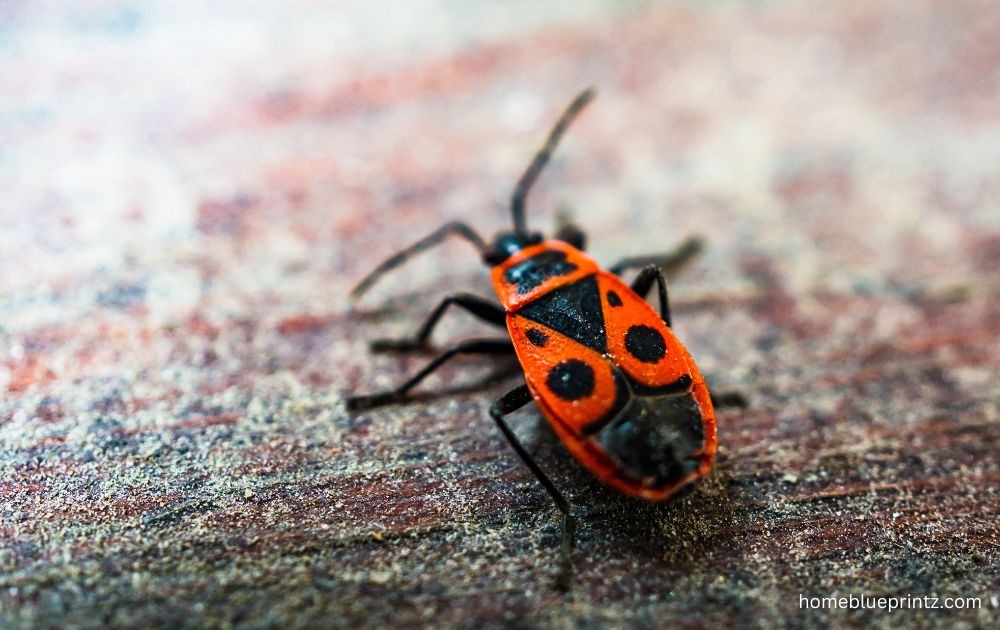Have you ever spotted tiny orange specks crawling on your windowsill, plants, or walls? Those little orange bugs might seem harmless, but they often raise questions about where they come from and whether they pose a risk. These bright-colored critters can be a mix of harmless beneficial insects and nuisance pests. Let’s explore what they are, why they show up, and how to manage them safely and effectively.
What Are Little Orange Bugs?
Little orange bugs refer to small insects or mites that appear in shades ranging from pale orange to deep reddish-orange. They can vary in size and shape depending on the species, but most are smaller than a pinhead. While some are beneficial—like ladybugs—others, such as clover mites or spider mites, can be a bit of a nuisance, especially when they invade homes or gardens.
Common Types of Little Orange Bugs
Clover Mites
Clover mites are among the most common little orange bugs seen around windows, patios, and walls. They are harmless to humans and pets but can leave behind red stains when crushed. These mites thrive on grass, clover, and plants near homes.
Ladybugs (Ladybird Beetles)
Ladybugs are one of the most recognized orange insects. Their bright, dome-shaped bodies are a symbol of good luck in many cultures. They feed on aphids and other garden pests, making them beneficial allies for plant lovers.
Spider Mites
These minuscule bugs are orange or reddish and often infest houseplants and garden foliage. They’re hard to see with the naked eye but can cause visible plant damage, like yellowing leaves and fine webbing.
Boxelder Bugs
Boxelder bugs are black with orange-red markings and often appear in large numbers in the fall. They don’t bite or sting but can become a nuisance when they gather indoors seeking warmth.
Carpet Beetles
While adult carpet beetles are typically black with colored markings, larvae sometimes appear orange-brown. They can damage fabrics, carpets, and stored clothes if not addressed promptly.
Where Do Little Orange Bugs Come From?
Little orange bugs usually originate from outdoor environments where they can find food and shelter, such as gardens, lawns, and areas with dense vegetation. They often thrive on plants, leaves, and grass, feeding on sap or organic material. When the weather changes—especially during cooler or wetter seasons these tiny bugs may move closer to homes or even indoors, searching for warmth and protection.
Seasonal Appearance of Orange Bugs
Little orange bugs tend to appear most often during the spring and fall seasons. In spring, they emerge from their hiding spots to feed and reproduce, thriving in the warmth and greenery. As temperatures drop in the fall, these bugs begin seeking shelter indoors to escape the cold. You’ll often spot them near windows, walls, or sunny areas where they can stay warm and active.
Why You’re Seeing Them Indoors
Little orange bugs often find their way indoors when outdoor conditions become less favorable, such as during extreme heat, rain, or the arrival of colder months. They typically enter through small cracks around windows, doors, and foundations while seeking warmth or shelter. Homes surrounded by lush vegetation, lawns, or gardens are more likely to attract these bugs. Once inside, they are drawn to light and warmth, making windowsills and sunny spots their favorite hangouts.
Are Little Orange Bugs Dangerous?
Most little orange bugs are not dangerous and rarely pose a threat to humans or pets. They don’t bite, sting, or spread diseases, though some species can become a nuisance when they invade homes in large numbers. Certain types, like clover mites, may leave red stains when crushed, while spider mites can harm plants. Overall, they’re more of an annoyance than a danger and can be managed easily with simple prevention methods.
How to Identify Little Orange Bugs in Your Home
Identifying little orange bugs in your home starts with observing their color, size, and movement. Most are tiny—often less than a millimeter—and appear bright orange or reddish. Check where they gather; clover mites usually crawl near windows, while ladybugs cluster around light sources. If you notice slow-moving specks on walls or plants, they’re likely mites, but flying or spotted ones may be beetles. Noting these small details helps determine whether they’re harmless or need pest control attention.
Natural Habitats of Little Orange Bugs
Little orange bugs thrive in warm, sunny areas where they can easily find food and shelter. They’re often drawn to gardens, grassy lawns, and plant-filled environments.
- Gardens and Lawns: Ideal for feeding on clover, grass, and plants.
- Tree Bark and Leaves: Common hiding and breeding spots.
- Walls and Windowsills: Warm surfaces attract them during cooler seasons.
Preventing an Infestation
Preventing an infestation of little orange bugs involves keeping your home and yard well-maintained and sealing potential entry points. A few simple habits can make a big difference:
- Seal Cracks and Gaps: Caulk around windows, doors, and foundations to block entry.
- Keep Things Clean: Regularly vacuum and dust to remove bugs and eggs.
- Maintain Your Yard: Trim grass and plants near your home to reduce hiding spots.
Natural Remedies to Get Rid of Them
Natural remedies are a safe and effective way to manage little orange bugs without using harsh chemicals. You can easily try a few simple methods at home:
- Vinegar Spray: Mix equal parts of water and vinegar to repel bugs around entry points.
- Essential Oils: Use peppermint, citrus, or eucalyptus oils as natural deterrents.
- Diatomaceous Earth: Sprinkle around windows or baseboards to dehydrate and eliminate bugs naturally.
Safe Chemical Treatments
When natural methods don’t solve the problem, safe chemical treatments can help control little orange bugs effectively. Always choose mild, indoor-safe options and follow label directions carefully.
- Pyrethrin-Based Sprays: Effective against mites and beetles with minimal toxicity.
- Insect Growth Regulators (IGRs): Prevent bugs from reproducing and spreading.
- Residual Insecticides: Provide long-term protection around windows, doors, and baseboards.
When to Call a Pest Control Professional
If little orange bugs continue to appear despite your cleaning and home treatments, it may be time to call a pest control professional. Experts can accurately identify the type of insect and apply targeted treatments that are both effective and safe. Professional pest control also helps prevent future infestations by addressing hidden entry points and breeding sites, giving you lasting peace of mind.
How to Protect Your Plants and Garden
To protect your plants and garden from little orange bugs, start by regularly inspecting leaves for any signs of damage, webbing, or discoloration. Keep plants healthy with proper watering and avoid overcrowding, which attracts pests. Use natural solutions like neem oil or insecticidal soap to manage infestations safely. Maintaining clean garden beds and trimming overgrown areas also helps reduce hiding spots and keeps your outdoor space pest-free.
Myths About Little Orange Bugs
Many myths surround little orange bugs, often leading to confusion or unnecessary worry. While some people mistake them for pests, not all orange bugs are harmful—in fact, many are beneficial to the environment. Let’s debunk some common misconceptions.
- Not all orange bugs bite or sting.
- Many species help control garden pests.
- Their bright color often serves as a natural warning, not aggression.
- They don’t always indicate infestation or damage.
Environmental Role of Little Orange Bugs
Little orange bugs play a vital role in maintaining ecological balance. Many of them act as natural pest controllers, feeding on harmful insects that damage crops and plants. Others help decompose organic matter, enriching the soil and promoting plant growth. Their presence often indicates a healthy, thriving environment where nature’s cycles are functioning properly.
Conclusion
Little orange bugs are a common sight in homes and gardens, especially during seasonal transitions. While they can be bothersome, most are harmless and easy to control with proper cleaning, sealing, and natural remedies. Understanding what kind you’re dealing with is the key to managing them effectively—without panic or pesticides.
FAQs about little orange bugs
- Are little orange bugs harmful to humans?
No, most are harmless and do not bite or spread diseases. - How can I prevent little orange bugs from entering my home?
Seal cracks, maintain yard cleanliness, and use natural repellents like vinegar or essential oils. - What do clover mites eat?
They feed on grass, clover, and other plants near the home’s foundation. - Can orange bugs damage my plants?
Yes, spider mites and certain beetles can cause damage if infestations grow unchecked. - Should I kill ladybugs indoors?
No, it’s best to release them outside since they are beneficial pollinators and pest controllers.





